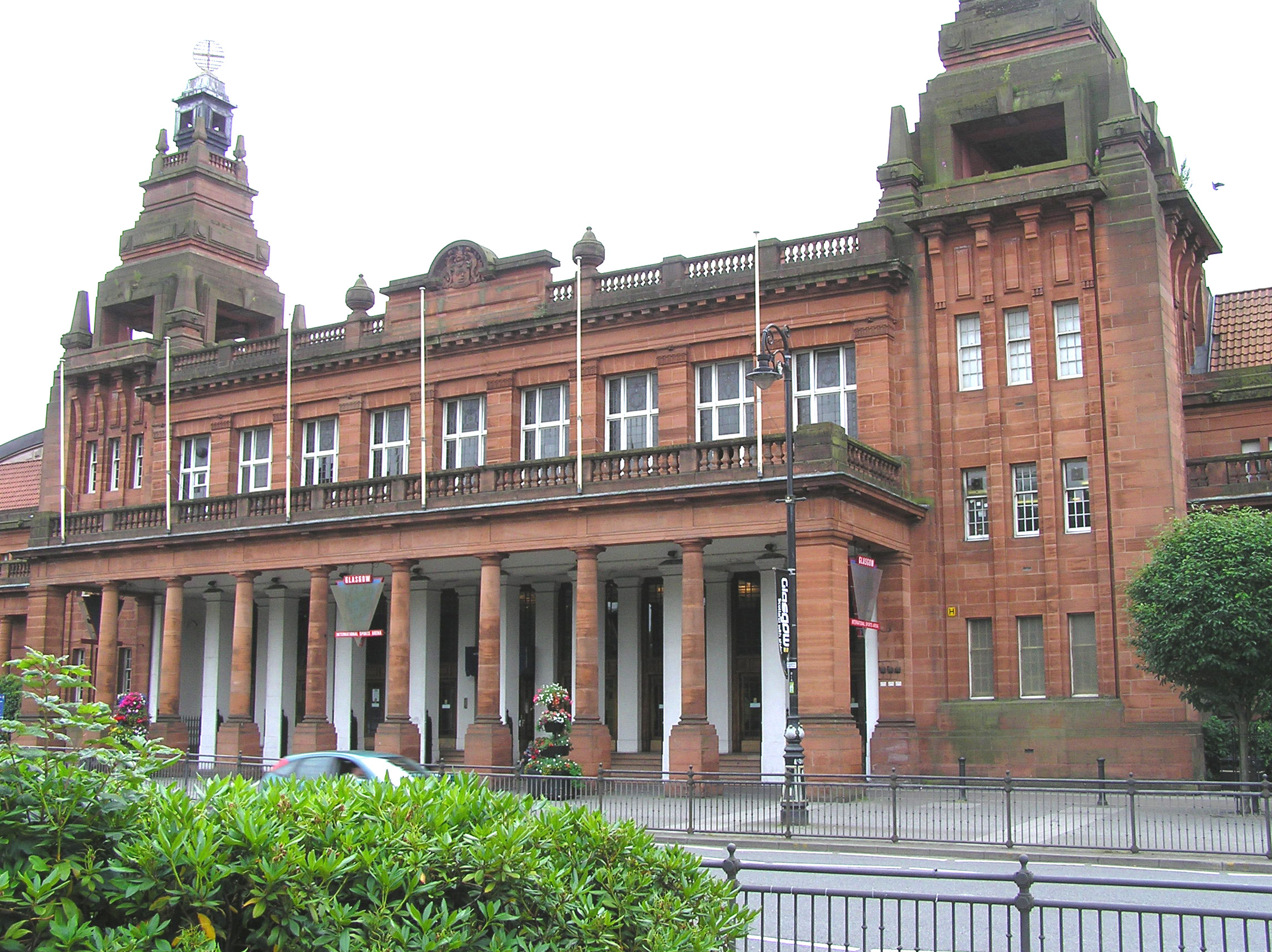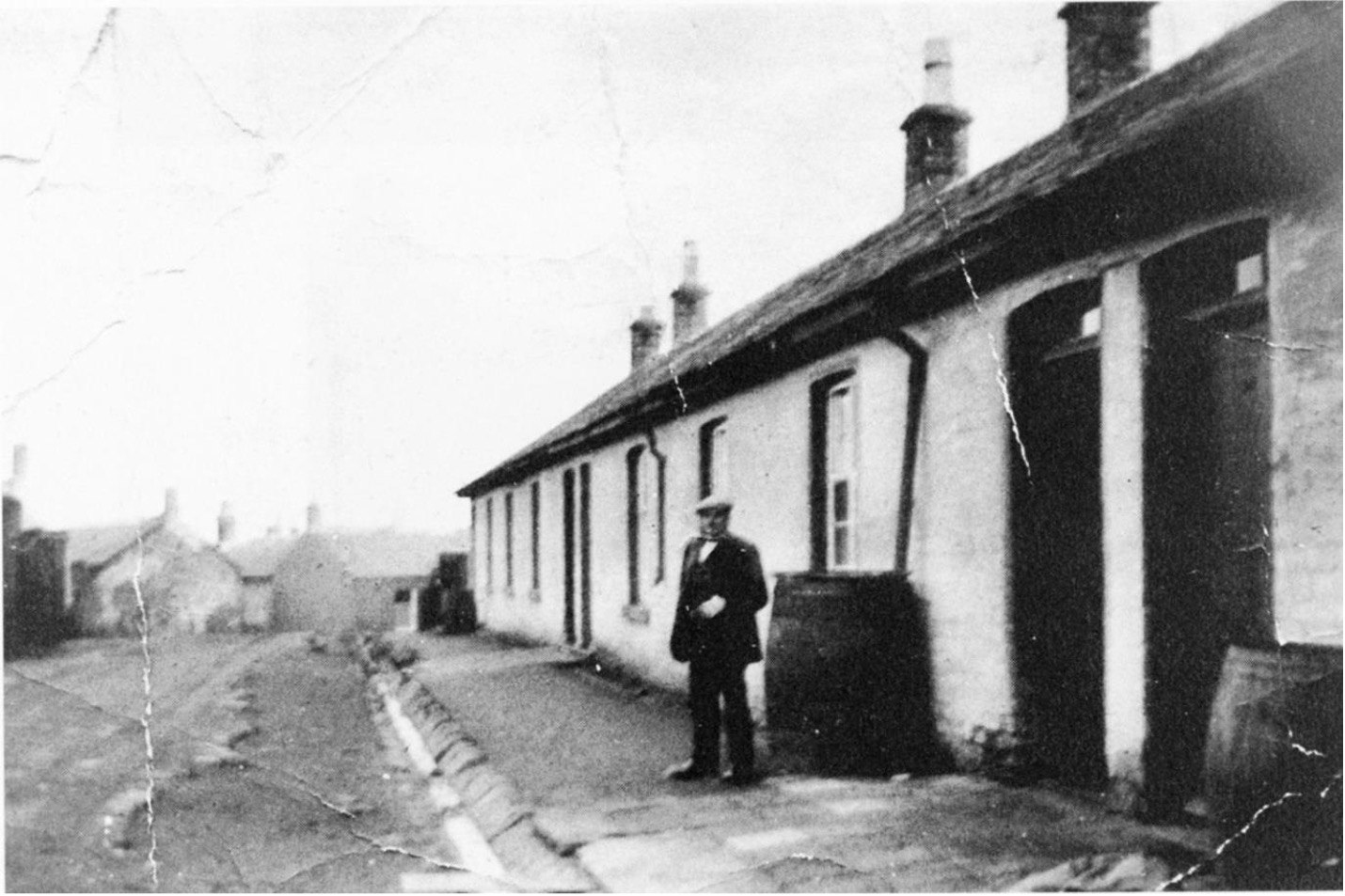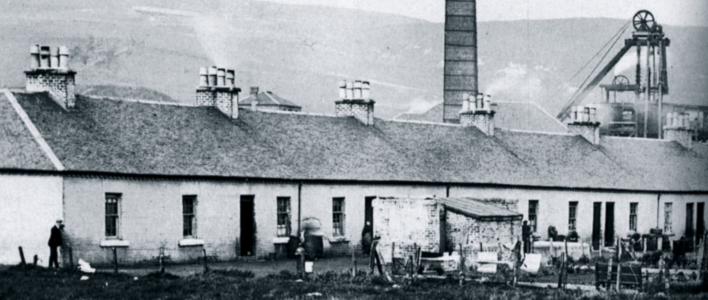Last month the Lost Villages team came out of hibernation and visited an actual archive!
It was a dull rainy day and perfect for visiting the National Library of Scotland Moving Image archives at the Kelvin Hall in Glasgow. The online archive is a great resource that we regularly use in our teaching at the University of Strathclyde. Many of the films are only available onsite in the archive so we went along to view three films about mining communities in Ayrshire.

IMAGE: Kelvin Hall, Glasgow Photo by Finlay McWalter, Creative Commons
We were very excited to view our first film, Mining Village. A black and white silent film titled as a ‘Record of everyday life in a typical Ayrshire MINING VILLAGE in 1943’. The description emphasised that most of the footage was about the domestic lives of the families in the village. It felt like we had hit the jackpot and it turns out we had! Watching the film lots of the testimonies we have heard were brought to life. We don’t know which Ayrshire village was featured. There is a railway line near the back of one of the rows and looks quite near the colliery site. So similar to many of the villages!
The day started with a woman making a cheese piece, sandwich, for a miner’s lunch. Then the miners were filmed heading out the village to the nearby by colliery. Most of the day in the village was spent with the women at work. The film showed one of the essential daily jobs in the villages: collecting water. A woman was shown pumping water from the famous lion headed spout or ‘spoot’ (also spicket) filling one of her many buckets of water for the day. It was wonderful to see this in action after hearing so many accounts of these pumps. Four women were filmed working together to clean the sewer which ran past the front of the houses. The women were all wearing their peenies (pinafores/aprons) to do their work. An interesting sequence showed a smartly dressed woman on a bicycle visiting the houses, we wondered if this was perhaps a nurse or health visitor as she didn’t seem like a casual visitor.
The interior shots inside the row houses were dark and the quality of the footage was poor. The hearth with the large stove could be made out and this dominated the main room. The miner comes home from the morning shift, he is covered in coal dust and speaks to the camera: if only we could hear his voice. His dinner is served to him, which seems to consist of mainly potato and perhaps neeps (turnips). We thought it was interesting that he didn’t wash before he ate. Once he finished his meal, he then washed himself in an enamel basin that his wife has filled with hot steaming water. The woman then emptied the water and cleaned the floor. The division of labour is very striking in this sequence. The wife and an older woman, possibly her mother, are shown washing the dishes together in a basin, then she take the larger pans outside and washed them at the open sewer. There is no sink used in this whole process.
We then saw the miners enjoying some leisure time. The men played a game where they threw some disks into the mud to land near a marker stone, possibly Quoits? And of course, the doos, or pigeons, which was a popular pastime in many mining communities.
Moving onto our next film made by the Church of Scotland Missionaries, called The Missionaries dated c.1930s. This had the most extraordinary footage of the village of Darnconner in the 1930s. It appeared that a good portion of the village was rubble. We know that many Darnconner residents were moved out during the 1930s and the final row demolished in 1940. It appears that the mining families were living on a half derelict site. There was wonderful images of the children in the street and the women looking out from their doorsteps. The next sequence is of a new mining village in Allanton, Lanarkshire. The contrast is stark. Wide roads, streetlights, cars and buses. The houses are largely two storey semi-detached with gardens. A totally different quality of life to the dark, brick rows of Darnconner where the only traffic was the chickens roaming about in the mud.

This image shows the village of Darnconner, reputedly with the last resident. Date unknown: possibly early to mid-1930s
Our final film for the afternoon was what appeared to be some family footage entitled, Waterside and district, date estimated to be between 1935-1940. The villagers of Lethanhill are shown congregating on the grass in front of the World War One monument. It is mostly the women, all dressed in their best hats and coats. It seems to be some sort of event and they are shown drinking tea and socialising. What is striking about this footage is how clear it is, the quality is very good. We could really see these women and some men enjoying their afternoon, again, if only we could have heard their voices. The next sequenced was of a parade down in Waterside, with the Dunaskin chimneys in the background. The Dunaskin Band, still going strong today, lead the way with the Boys Brigade and Girl Guides prominent in this community event.
As always, film can really bring history to life, in the same way that hearing someone’s story is not the same as reading it. To see the daily lives of the mining communities in action was wonderful. All the films were silent. Every time someone spoke to the camera, you longed to hear what they were saying: to hear their voices. We hope to share these films at some point with the local communities so we will keep your posted!
If you can tell us anything about these films or have family stories from the villages we would love to hear them. See our Get Involved page
